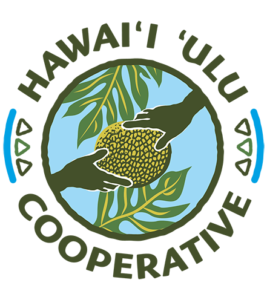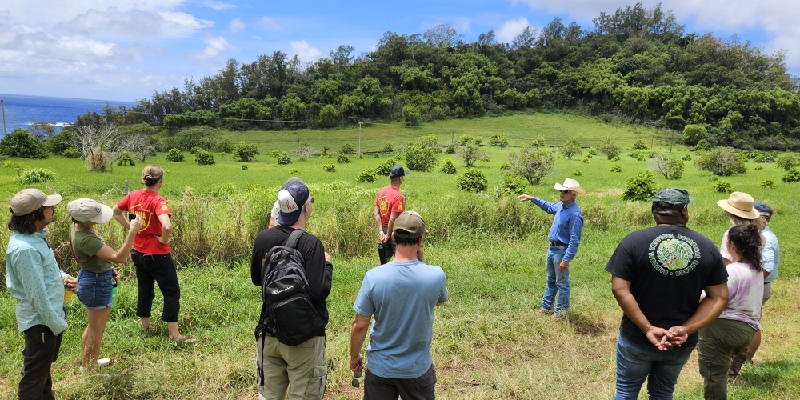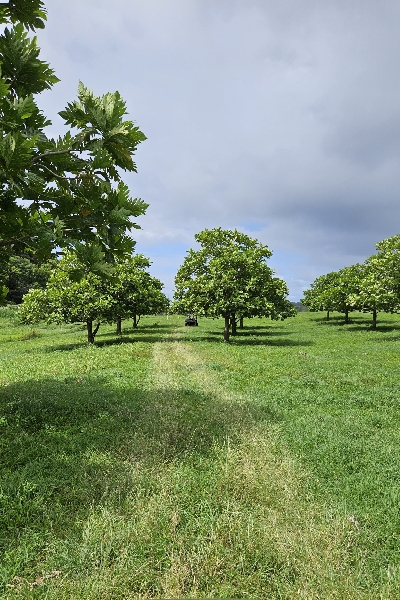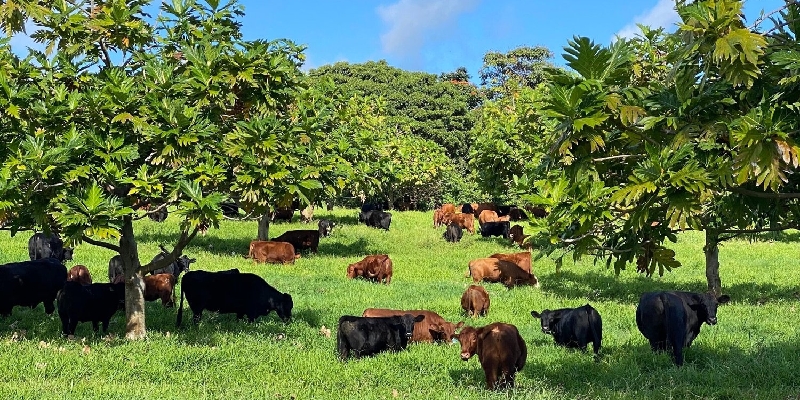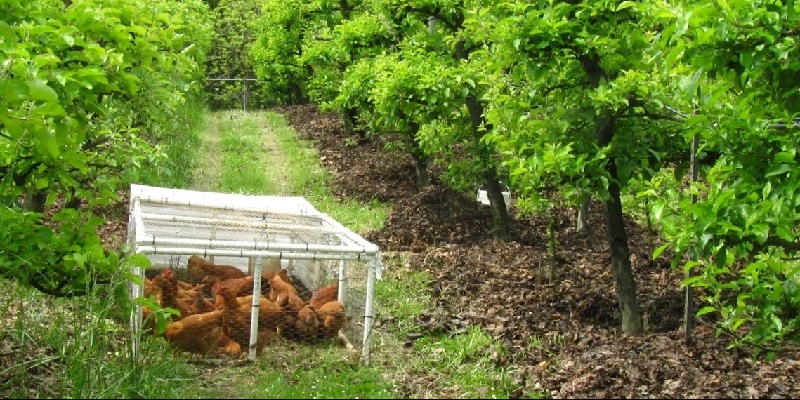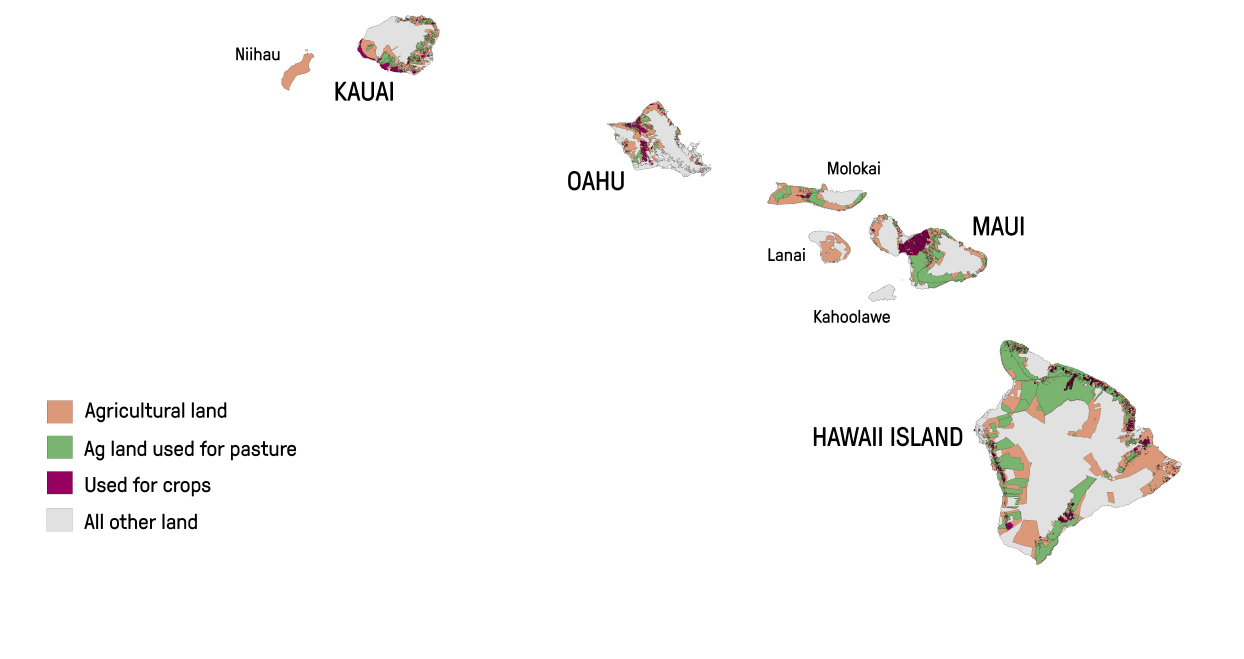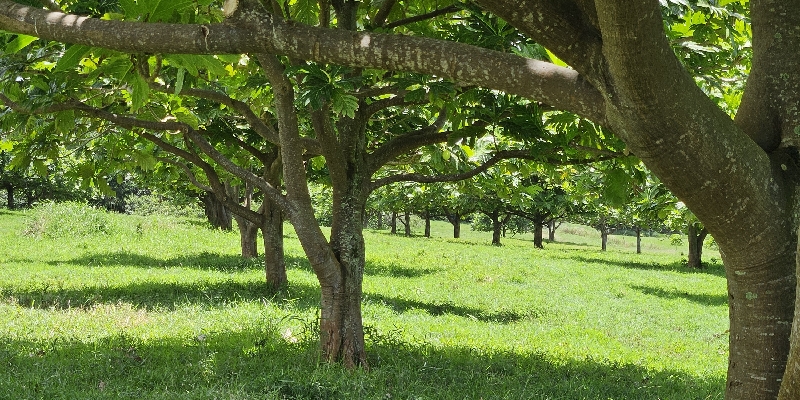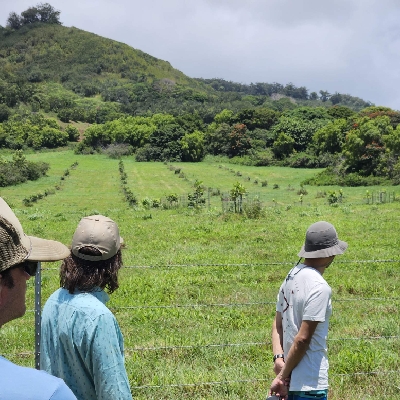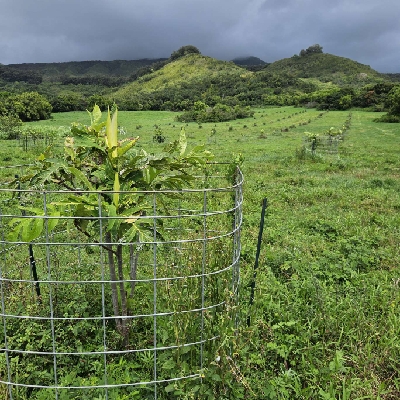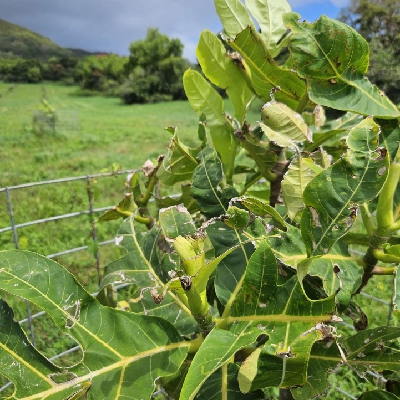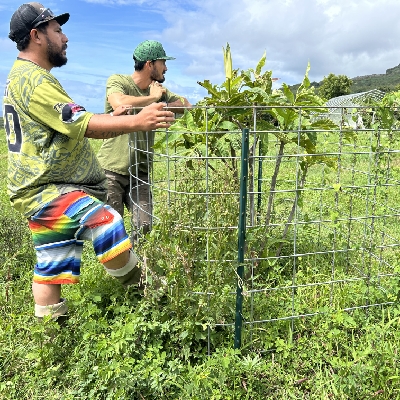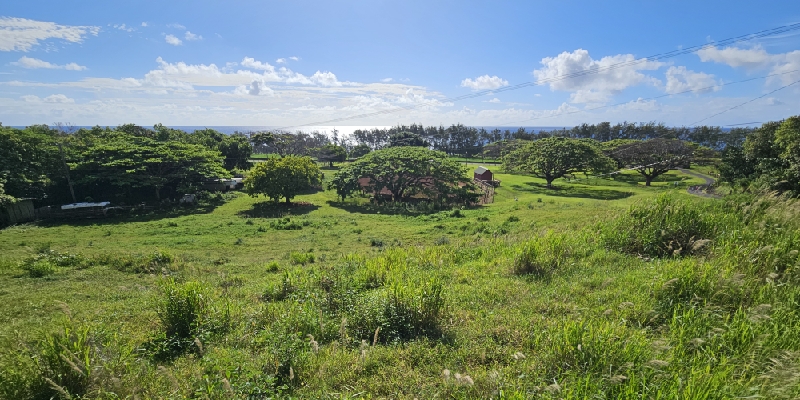Silvopasture at Hāna Ranch
The ʻUlu Co-op held its first Maui regional farmer meeting on Saturday, May 25th 2024 at member-owner farm, Hāna Ranch, which operates a very unique ʻUlu + Cattle silvopasture system.
During the event we discussed the co-op’s current activities and goals on Maui, the new Expanding Agroforestry Project (EAP), and toured the ranch’s silvopasture practices. The following write-up aims to outline what we learned about the Hāna Ranch silvopasture system – from installation, management, best practices, harvest and production, as well as future goals – and how this ties into the greater context for silvopasture in Hawaiʻi today.
Attendees learn from Hāna Ranch manager Duane Lammers about the installation and management of their young ʻulu trees.
What exactly is Silvopasture anyway?
Silvopasture or Silvoculture, is an agroforestry practice defined as “the establishment and management of desired trees or forage on the same land as livestock”. (USDA, 2023)
The reasons farmers choose to implement silvopasture are diverse and include things like:
- increased production & revenue
- animal forage
- shade & shelter
- manage pests and invasive brush
- renewable fertilization of trees through livestock manure
- improve health and productivity of trees
- improve water quality & soil quality
- biological diversity
- reduce erosion
- enhance wildlife habitat
- carbon sequestration
- pollinator benefits
Cattle grazing within an ʻUlu orchard. Photo courtesy of Hāna Ranch, Maui.
As Silvopasture is not yet a mainstream practice in modern agriculture, the methods being explored are diverse and possibilities endless. Besides the diversity of tree crops that could be used, systems might also include a diversity of animals – such as Cattle, Sheep, Goats, Pigs, Chickens, Ducks, Turkeys, and other fowl. Examples of this include Hawaiʻi Island cooperative members, Island Harvest, who manage sheep within their ʻUlu orchard using electric fencing. Watch our silvopasture video featuring this system!
Many people are also turning to mobile chicken coops, or “chicken tractors” as a popular way of managing orchard alleys while also producing pasture raised eggs or poultry on the otherwise unused space.
A chicken tractor deployed to control weed and insect pests among an Apple orchard. Terra Magazine, Oregon State University.
In Hawaiʻi, nearly 40% of our designated Agricultural land (about 760,000 acres) is utilized for grazing (USDA Ag Census, 2022). Compare that to the 8% of Ag lands that are utilized for crops (158,000 acres), and it’s clear to see that silvopasture, the integration of tree crops and animals on the same land, could have a major potential impact on the productivity of our agricultural lands by allowing a tree crop to be produced along with a livestock product.
Map of Hawaiʻi agriculture land. CivilBeat, 2021
The Hāna Ranch system
Hāna Ranch is the first beef cattle operation in Hawaiʻi to intentionally plant and maintain ʻUlu orchards commercially within their pastures to produce a secondary crop from the acreage. Receiving their trees from their neighbors, the renowned NTBG Kahanu Gardens, the ranch installed their first roughly 300 trees spread across two separate fields in 2014. That’s when the ranch staff learned their first hard lesson with managing tree crops… animals will eat your young trees. Between the cattle and wild pigs, they quickly lost over half of their new plantings.
Fast forward ten years to today and nearly 100 ʻUlu Fiti variety breadfruit trees from the initial planting fortunately survived and are now productive. Seeing how well the ʻulu trees and cattle do together, the ranch has since planted nearly 200 more breadfruit trees (including varieties Ma’afala, Fiti, and Otea) that are still maturing, with plans to plant more yet.
- 3 separate fields
- 50ft spacing (roughly 16 trees per acre)
- Roughly 300 trees in ground, 100 producing
Ten year old ‘Ulu trees spaced 50 feet apart at Hāna Ranch.
Management
When it comes to managing Silvopasture systems, there is one critical decision that nearly every project has to choose between in order to protect their young trees, and that’s “exclusion fencing” or “tree shields”. In the case of Hāna Ranch, they’ve chosen to try both.
In order to ensure young trees won’t be damaged or destroyed by wildlife or the grazing animals, many projects install exclusion fencing around the perimeter of their plantings and exclude their animals from the area in a practice also referred to as “Grazing Deferral”. This exclusion period lasts until the trees are tall and mature enough to safely reintroduce the livestock; for ‘Ulu and many other common fruiting trees, this is typically around 4 years. This method also requires an alternative method of managing grass and invasive brush in the pasture around trees, and generally this means regular mowing.
The other option is Tree-Shields that are installed around every new planting in order to protect young trees as they mature. In theory this allows the livestock to safely remain in the area during the years the young trees are maturing. The benefit is that the grass is maintained without having to mow and the land is still utilized for grazing.
So which method is better? It depends on many factors and every situation is different. For Hāna Ranch, they decided they would try both for their latest planting… One field excluding + mowing, and one field with tree-shields (or cages in their case).
- Mature tree field: Cattle excluded for first 4 years.
- Trees now 10 years old, taller than cattle can reach
- 400 head herd, rotated in for 4-5 days
- Mow to control invasive shrubs 1 week after grazing when grass is still low
- Minimal pruning, trees taller than standard orchard system
- No mulching, compost, or herbicide use (attracts wild pigs)
- Fertilize twice per year
- Soil soak spray with EM-1 + Molasses around tree bases to control Phytopthera disease
- About 300/lbs per tree average annual harvest
- Young trees – cattle exclusion: Mow field once per month or as needed
- 2-3 more years until cattle are able to be reintroduced
- Wild Pigs still get through the fence occasionally and damage trees
- Young trees – tree shields: One 16x5ft stock Hog fence panel wrapped into a circle
- Secured by two T-posts & tie wire to ceate a cage
- Protects against pigs, but cattle will still chew leaves and tops that stick above the cage if left in paddock too long
- Cattle allowed to graze area for 1-2 days
- Cost of trees, planting, cage material, and labor total about $100/tree
Silvopasture workshop group learning about Hana Ranch’s tree cage protection method.
About 100 young ‘ulu trees in cages to protect from cattle grazing and wild pigs.
Close up of chewing damage from cattle if they are left in paddock too long or if cages are too short.
HUC & Hana Ranch staff with tree cage for scale. Note: tree cages may also require weeding maintenance around bases.
Is Silvopasture the future of agriculture in Hawai’i?
Whether you are a Rancher looking to plant trees, or a Farmer looking to raise some animals, at the Hawaiʻi ʻUlu Cooperative, we sure think Silvopasture is a win-win. As much of our current pasture lands were once forests before the sugarcane, pineapple, or cattle industries, it would seem naturally fitting to grow trees there again. With silvopasture agroforestry techniques, there are unique opportunities to increase the productivity, profitability, and diversity of our ag lands while also benefiting our environment. The ʻUlu & Cattle system at Hāna Ranch is just one great example.
If you’re a landowner, rancher, or farmer who is interested in implementing a new silvopasture system – be sure to consider the new Expanding Agroforestry Project funding program which can help pay for installation costs. More information about this program and how to apply can be found on the EAP webpage.
